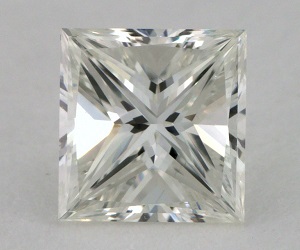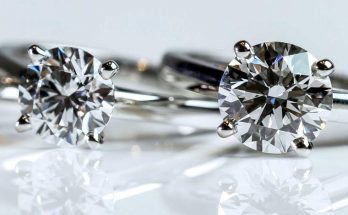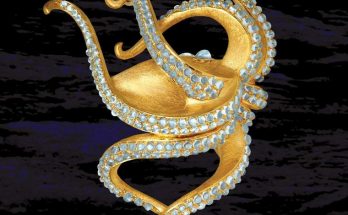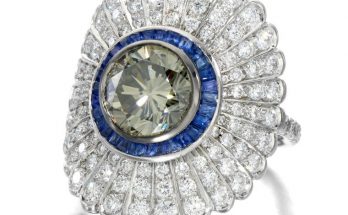When it comes to buying diamond jewelry on a budget, the princess cut is a pretty good choice for a balance of beauty and cost. It allows you to go low on the clarity and color grades without noticeable differences to the unaided eye. This is because the brilliance and fire exhibited by a well-cut princess can help mask inclusions and hide body color.
Also, the princess cut is a cheaper option than round diamonds because the yield from the rough stone is much higher. You see, the pyramidal shape of the princess cut only requires minimum weight loss from an octahedral rough stone during the polishing process.
This is why a princess cut with similar specifications (color, clarity, carat weight) to a round diamond typically costs 30-40% less.
Weight Retention Tricks Employed by Cutters
Since we are on the topic of diamond cutting, I want to let you know that the majority of polished diamonds are cut to preserve the maximum weight from the rough. In princess cut diamonds, the tell-tale signs of diamonds cut with weight retention techniques are table percentages near or higher than 80% and very thick – extremely thick girdles.
The problem I personally have with such diamonds is that their optical performance had been compromised for a higher carat weight. For example, having a table size that is too large will result in a significant reduction of fire.
Excessively thick girdles will lock in carat weight at the girdle area which can’t be seen once the diamond is mounted. This means that you get a smaller looking diamond despite paying more for carat weight!
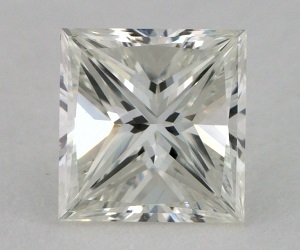
This hideous looking diamond has uneven-sides and an enormous table size of 83%.
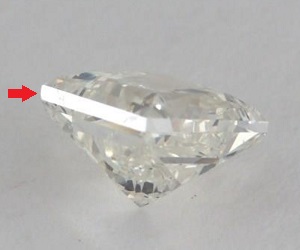
Arrow depicting weight hidden in profile view with extremely thick girdle.
Using Technology to Help You Choose Eye-Clean Diamonds
Choosing stones in the SI1 or SI2 clarity grades can sometimes yield eye-clean diamonds that can give you better value for money. However, you need to exercise caution and never buy blind. The best method of determining eye cleanliness would be through the use of videos or photographs at a high resolution. James Allen is one such vendor that excels in this aspect and is highly recommended by me.
The 4 Pointed Corners Are Vulnerable Areas
At areas near the 4 pointed corners, the diamond will be very prone to chipping if it is not handled well. Try to avoid princess cuts with inclusions located near the corners. These inclusions create weak points in the crystalline structure and make the diamond susceptible to damage during the setting process.
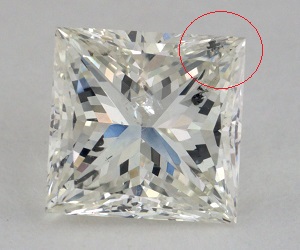
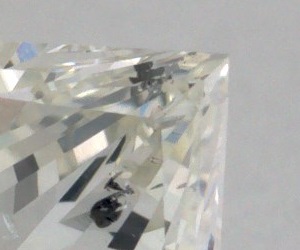
This I1 princess cut has a crystal inclusion that poses significant danger for durability.
Different Outlines And Length to Width Ratios
Did you know that princesses can come in all sorts of shapes and outlines? Sadly, a lot of badly cut diamonds flood the market today and the majority of the stones have poor light performance. Below are some of “bad” examples of shapes and outlines that princess cuts can come in.

One of the most common mistakes people make when buying fancy cuts is to buy sight unseen or based solely on a grading report. This is because the grading report alone will never tell you how the diamond looks like in real life. To avoid such problems, I highly recommend that you work with vendors that offer visualization technologies so that you know what you are getting.
Example of a Super Ideal Princess Cut Diamonds – Brian Gavin
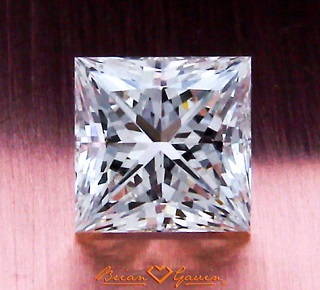
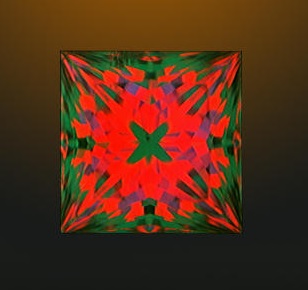
This diamond has optics that represents the top 0.1% of all the polished princess cuts in the market.
This Brian Gavin signature princess is a fine example of an ideal diamond you can use as a benchmark when comparing other princess cuts. The ASET image shows areas of red which indicate intense light return and is highly desired since it translates into a bright and sparkly diamond.
On the next page, I will cover a hidden aspect of the princess cut that most jewelers never tell you about – chevrons. Did you also know that the chevrons in a princess can change the outlook of the diamond and impacts its scintillation pattern?
<<
>>
SOURCE:http://beyond4cs.com/shapes/princess/what-to-take-note-of/
